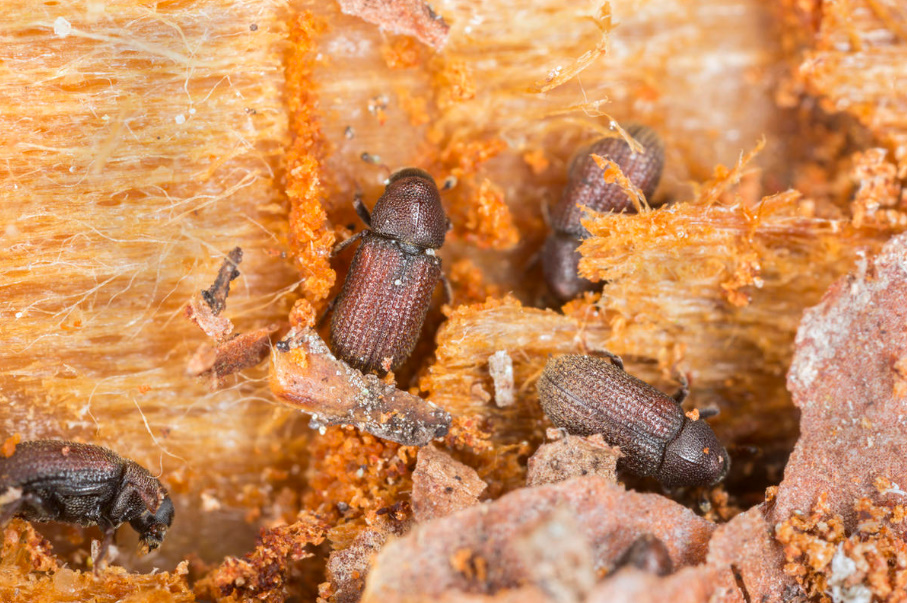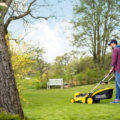Are you ready for your house to be eaten? Bugs and ants can, if not destroy your home, then cause significant damage to it. Is it possible to fight this scourge and does it make sense?
Pest beetles
Who is gnawing a wooden house? Of course, the bark beetle! Substitute any other name — the essence will remain the same: we don’t know much about pests. We have a kind of collective image of a pest, but sometimes you need to know more to fight it. The fact is that there are many types of pests, their behavior is different, and, as a result, the degree of damage and methods of control differ.
Beetles penetrate the wood in order to lay larvae. That is, the beetles themselves cannot significantly damage the wood: they simply do not need it. But the larvae are quite another matter — they are voracious and in no hurry to leave the wood. After maturation, they make a so-called flight hole and leave the house as a bug. Very soon this bug will be looking for a place to lay its eggs. And now it is important that this place does not become our home again. How? We use protective equipment. And then it’s time to remember that some consider pest control a waste of time and money. The argument is simple: they will gnaw and fly away, they will not live forever. They won’t, but they can come back.
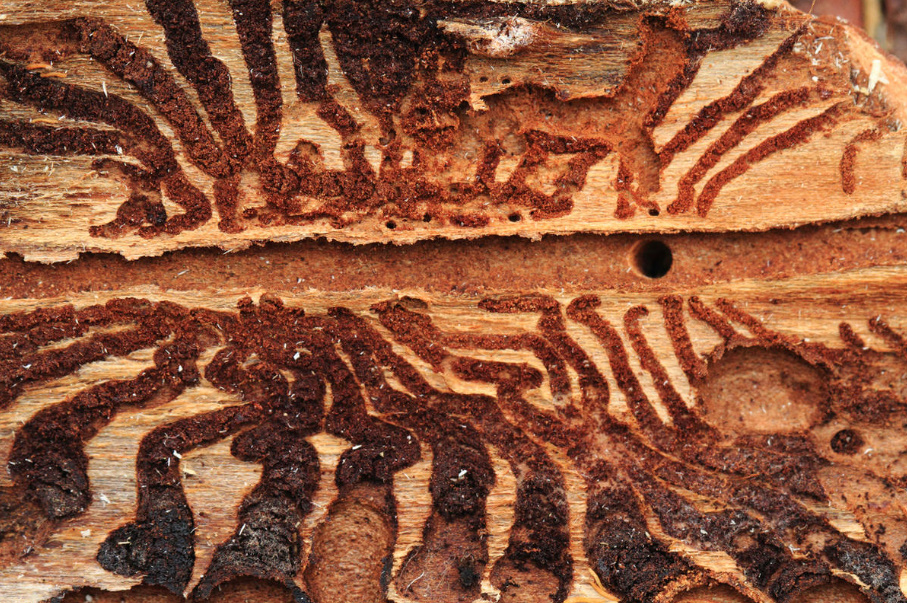
Types of pest bugs
There are many types of pest bugs. The most common are:
- Wood grinder. The life span of the beetle is no more than 6 weeks, but the larva remains in the wood for up to 10 years;
- Anobium punctatum. Prefers old wood. The larva stage is 6 months old;
- Cerambycidae. It lives only in the bark. It does not pose a danger to wood, but it can spoil the appearance with shallow surface passages;
- Scolytinae. The larva stage is only 3 weeks old, but one female is able to lay an average of 80 eggs.
How to understand that the house is infected?
- The appearance of drilling flour next to wooden elements. By the color of wood dust, you can determine the depth of penetration of the pest. Dark flour indicates that the insect is in the surface layers, light flour means that the pest has penetrated deep.
- To get into the wood, the beetle makes a hole in it. Their presence should alert you. If there are many holes and they differ in diameter, it means that a generation (or maybe more than one) of beetles has already grown in the wood, and the wood inside is damaged.
- Crunching in wood is also a sure sign of the presence of pests. The more muffled it is, the deeper the larva is.

How to fight
Insecticides are used for the prevention and control of bugs. Depending on the composition, they can be toxic and non-toxic.
Toxic insecticides
- Pyrethroids
- Carbamates
- Organophosphates
- Chlorine-containing insecticides
Products based on toxic insecticides: Xylamon Farblos, Xylamon Braun Plus, Katrit Delta (Delta 100), Sadolin Sadokill, Lignofix Super, Pregnolit Uni and others. Insecticides of this group are highly toxic to insects, but for warm-blooded their toxicity is minimal.
Non-toxic insecticides
- Insect growth regulators. Affect the hormones of the insect, after which it either stops developing or becomes sterile
- Inhibitors of chitin formation. Block the larval development process.
Products based on non-toxic insecticides: Telurin KOD S 1033, Lignofix I-Profi, Lignofix Top, Deron Plus.
Important! Non-toxic insecticides do not give instant results. It is advisable to use them to prevent the appearance of pests or at the very initial stages of infection.
How to use insecticides
For prevention, wood is treated superficially with a brush or spray gun. If it is necessary to get rid of the pests that have already appeared, it is necessary to carry out syringing. To do this, holes are drilled in the logs at an angle that will not allow the liquid to pour out. The pitch between the holes is approximately 0.5 m. Insecticide is injected into the resulting holes. After some time, the operation should be repeated for a better internal impregnation. The treatment should be carried out in the summer, during the departure of young beetles.
Important! When working with insecticides, it is necessary to observe safety precautions, use protective equipment and strictly follow the instructions of manufacturers.
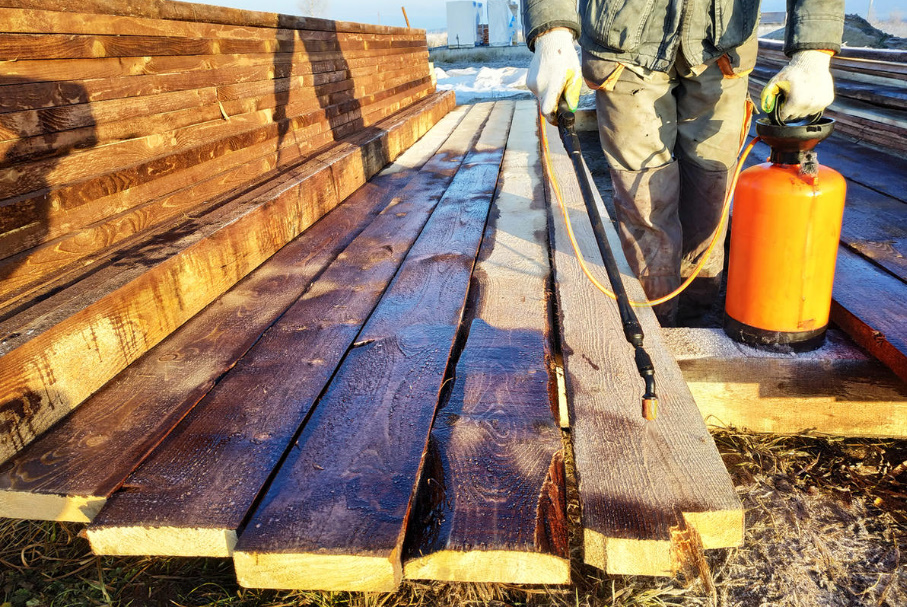
If not processed…
Pest bugs, of course, are not able to eat a house from the foundation to the roof. In most cases, they will not cause much damage. Every year our house becomes drier and therefore less attractive to pests, because for the most part they prefer to settle in juicy layers of wood, for example under the bark or in the upper fresh layers. And yet bugs can pose a threat to the structure. We are talking about damage to load-bearing elements, especially if the builders did not lay down a margin of structural strength, and you did not waste time and money on treatment against pests. Over the years, the result of the imposition of all these factors can make itself felt.
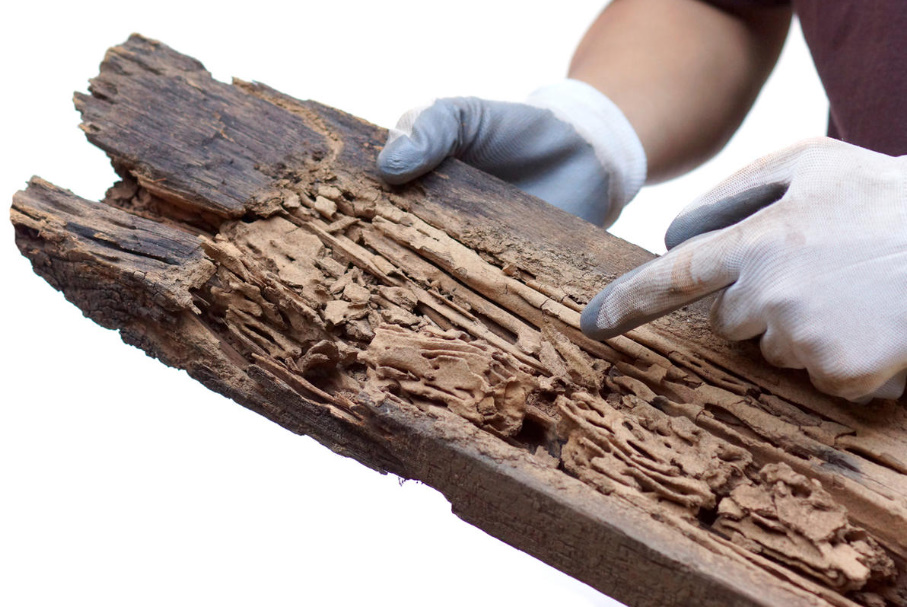
Important! Dampness and mold in a wooden house is not only a big and independent problem, but also a possible cause of the appearance of a certain type of bugs. They need mold for the development of larvae, therefore, making moves in the wood, they bring its spores inside on their paws.
There is an opinion that you can get rid of pests by freezing the room. But from my own experience, I can say that the method is not the most effective. Probably, it works with some pests, but some are not that minus, and even good frosts are not terrible. There is a pest in the wooden rack of the terrace of our country house. He’s sitting somewhere deep. There are no moves and traces of vital activity, it is impossible to determine the location, but the greedy crunch can be heard very clearly. We hoped that the winter frosts would solve the problem, but, alas, in the summer we heard the familiar crunch again in the same place. At the same time, the house stood unheated all winter, and the temperature outside dropped to -20 ° C. And this is quite understandable, because in nature beetle larvae have to winter in fairly harsh conditions.
How to prevent the appearance of a bug?
Of course, the house cannot be isolated from insect pests. After all, he is standing on the ground, and there is no vacuum around him. Sooner or later, bugs will find and try your home. And yet it is possible to keep the situation under control.
Tip 1. Choose clean, uninfected wood for construction.
Tip 2. If possible, evaluate the seller’s warehouse. Wood should be stored without bark. There shouldn’t be a humpback warehouse nearby.
Tip 3. Pay attention to your site: do you have a bunch of logs or boards with the status “it’s a pity to throw them away, but what if they come in handy”? Assess what condition they are in, whether there is wood dust under them. It is quite possible that it is in this bunch that you are cultivating pests. Such supplies are unconditionally and immediately sent to the furnace. However, sometimes there is no way to get rid of such a bunch…
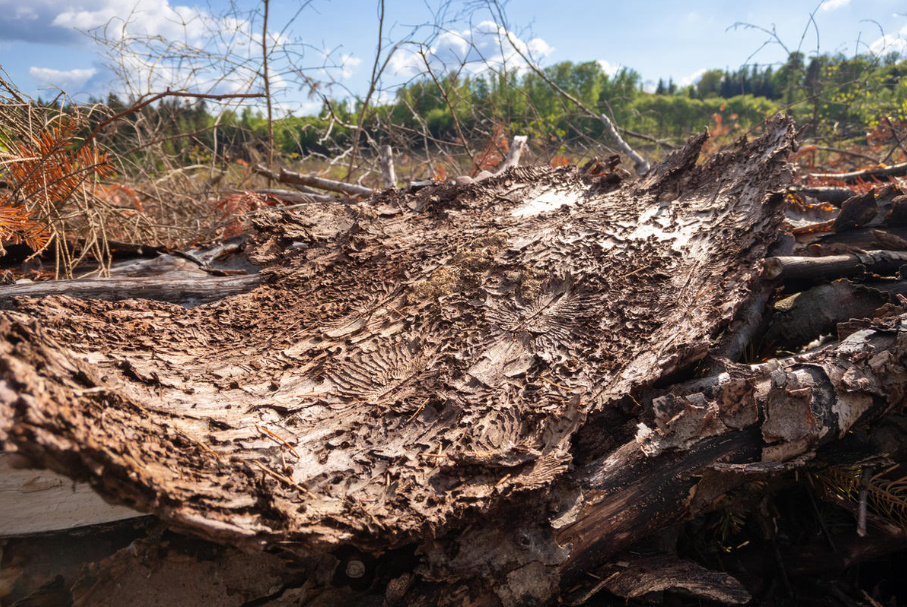
The wooden bathhouse of my friends was attacked by hordes of pests. At first, no one could understand why, but the reason was discovered by specialists who came to save the bathhouse from insects. It turned out that the neighbor’s unfinished log house, or rather, the materials for its construction, became a home for pests. Logs have been lying around on the site for years, of course, they were not processed with anything — and turned into a real hotbed. Unfortunately, there is no way to get rid of the source of the problem, that is, from the mountain of affected logs. The way out is to defend your own wooden buildings with the help of various kinds of treatments.
You can also use the method used to protect the forest, that is, to lay traps — freshly sawn trees, cleared of branches. When the insects make masonry in them, the trees need to be burned. However, here you need to understand exactly what kind of pests you have to deal with, since the time of their summer may vary.
Camponotus vagus
In addition to pest bugs, Camponotus vagus is a real danger. They choose logs for the construction of an anthill. As a rule, the lower crowns of log cabins suffer from them, the replacement of which is a very difficult story. In frame houses, the colony inhabits the inner layer, rendering both the racks and the insulation unusable. Therefore, as soon as you find ants heading towards your house, immediately take action. The primary task is to get rid of the uterus. This is the largest individual, around which the whole life of the colony is arranged.
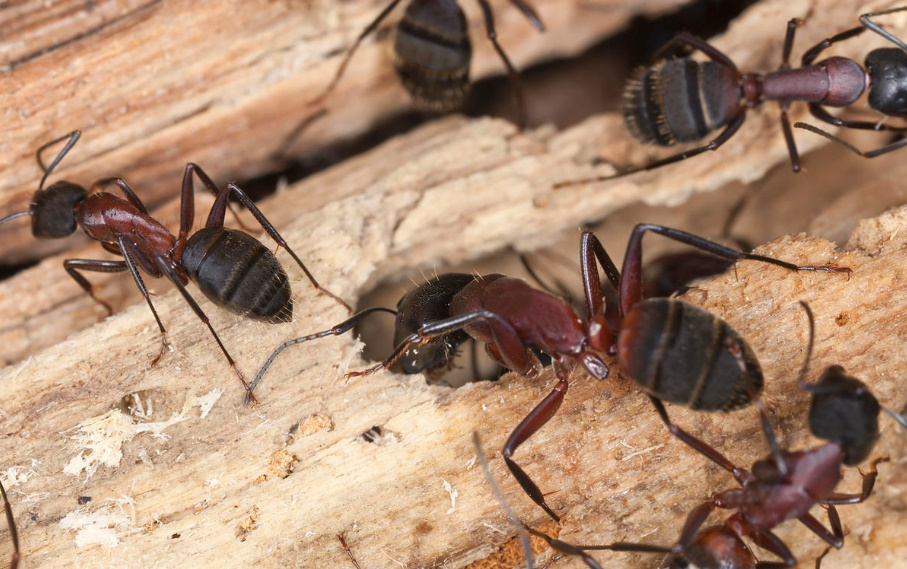
At the initial stages, folk methods can be used. But if the anthill has already grown, special insecticides are needed that will quickly destroy the colony.
